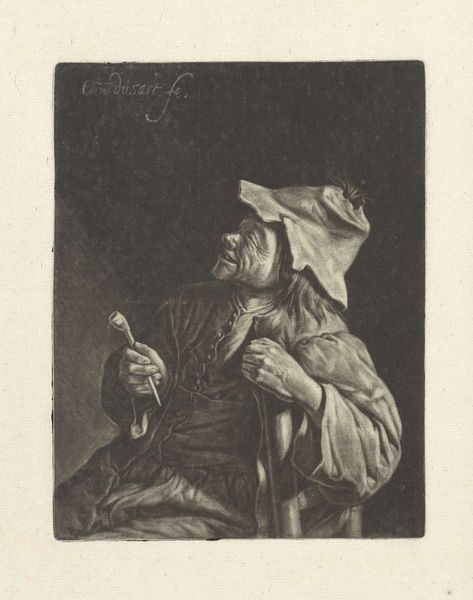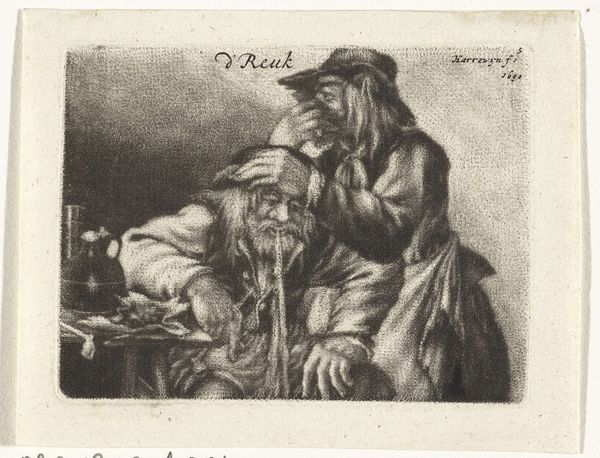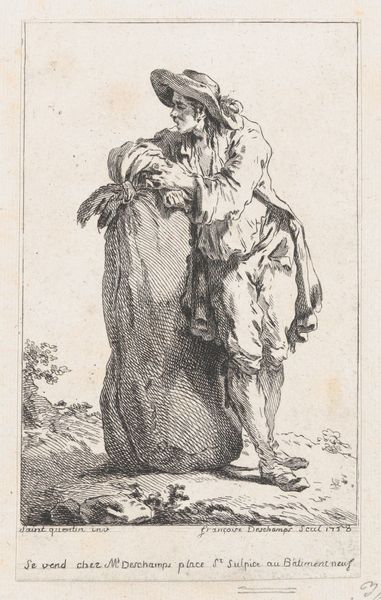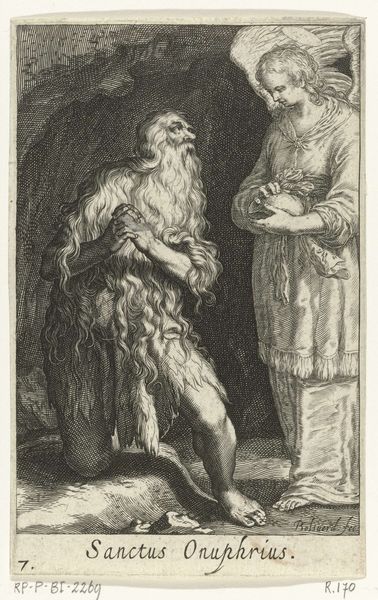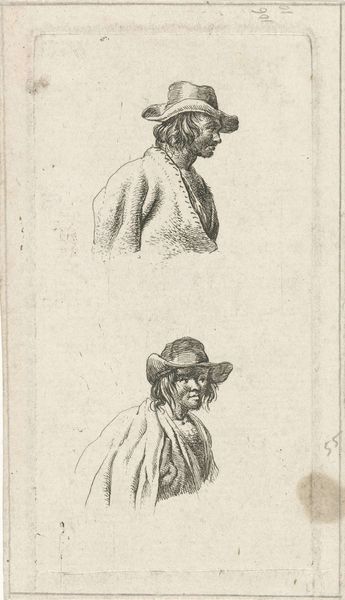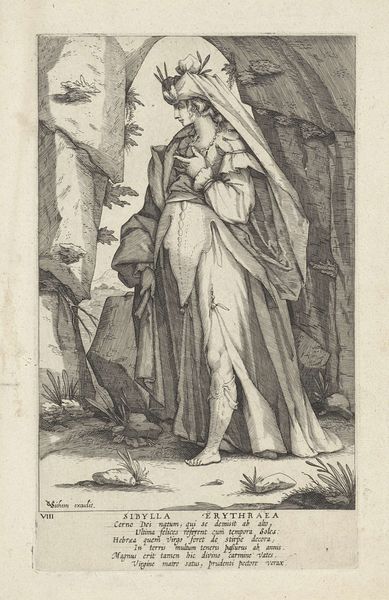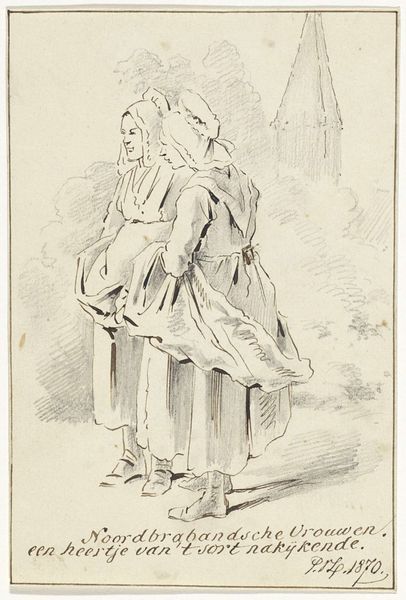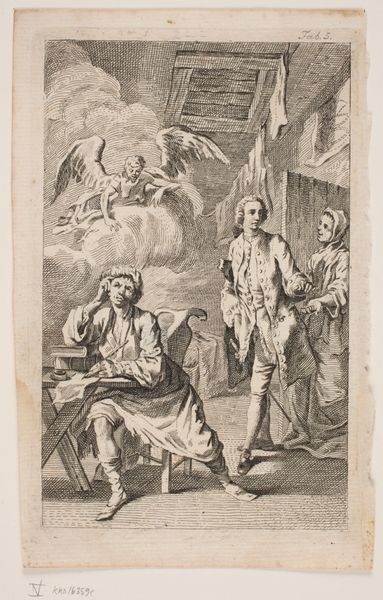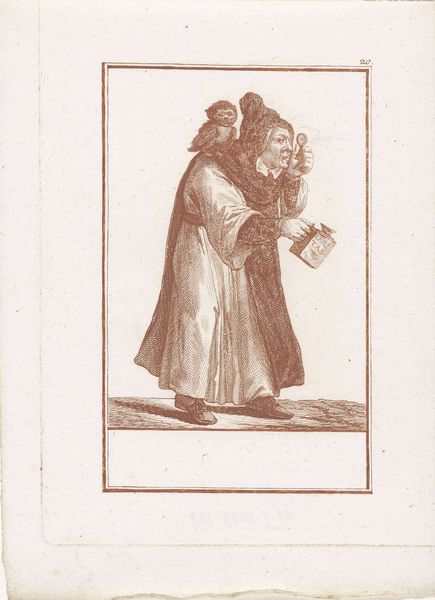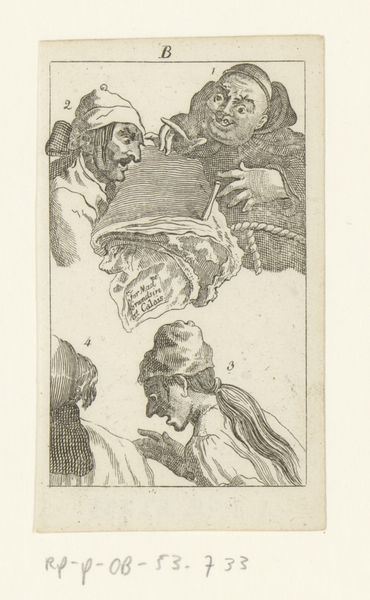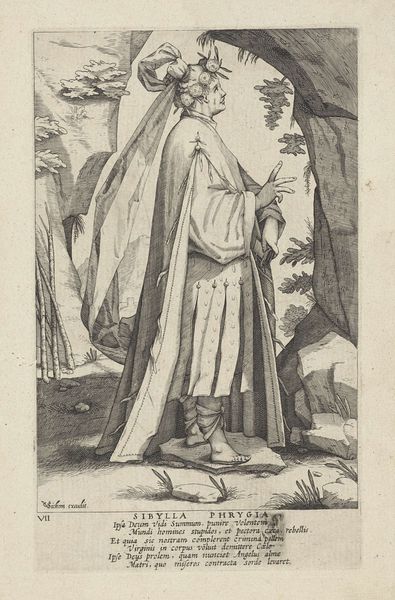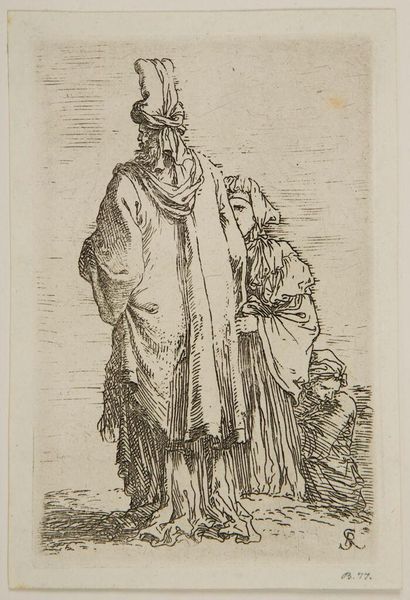
Dimensions: height 138 mm, width 81 mm
Copyright: Rijks Museum: Open Domain
Curator: Welcome. Today, we're observing "Blind Man with Guide and Beggar," an engraving created by Pieter de Mare between 1768 and 1796, now housed at the Rijksmuseum. Editor: Woof, that's rough. Instantly, it gives me such a melancholic vibe. Two separate scenes stacked, both shrouded in shadow, all rendered in such sharp, unforgiving lines. It's like two stages of suffering displayed one over the other, isn't it? Curator: Indeed. De Mare offers a glimpse into the lives of the marginalized through potent symbolism, drawing heavily from the visual language prevalent in genre painting and portraiture of that time. Consider the positioning, the garments, how it signifies destitution. Editor: See, the guide above...it is odd, how stoic he looks. Like a mirror version, but maybe that stoicism is hiding resentment. The blind man grasping a helping hand with...Is that reluctance? He almost repels against his younger counterpart's support. It reads like this boy has heard this complaint many times, the eternal tug of obligation. Curator: A powerful point. Visual symbols communicate much of social relationship, and perhaps expectation. Even in their poverty, there is hierarchy represented between blindness, age and relative youth, both depending on charity from others in turn. This motif, where vulnerability must rely on someone potentially just as, or even more, insecure is common in the imagery concerning charity through those times. The beggar below seems quite isolated, although he seems like being at peace with his faith and with himself. Editor: Yeah, you are right; like the cloak symbolizes covering not only the skin but something that also gives some kind of… mental serenity… I find it odd he has a completely closed fist, like hoarding what little nothing they must hold; this really hits. It's amazing how an engraving can distill such complex feelings with simple contrasts between dark and light and closed lines. Curator: It does, and this engraving's strength lies precisely there; it's ability to take everyday characters of marginal people and depict their most intrinsic and hidden fears. By looking at art like this, we recognize how, throughout the eras, cultural awareness creates continuity through these images, communicating at an intimate level human’s experiences. Editor: Absolutely! It’s funny how a piece from centuries ago can feel so present today. Definitely food for thought.
Comments
No comments
Be the first to comment and join the conversation on the ultimate creative platform.
